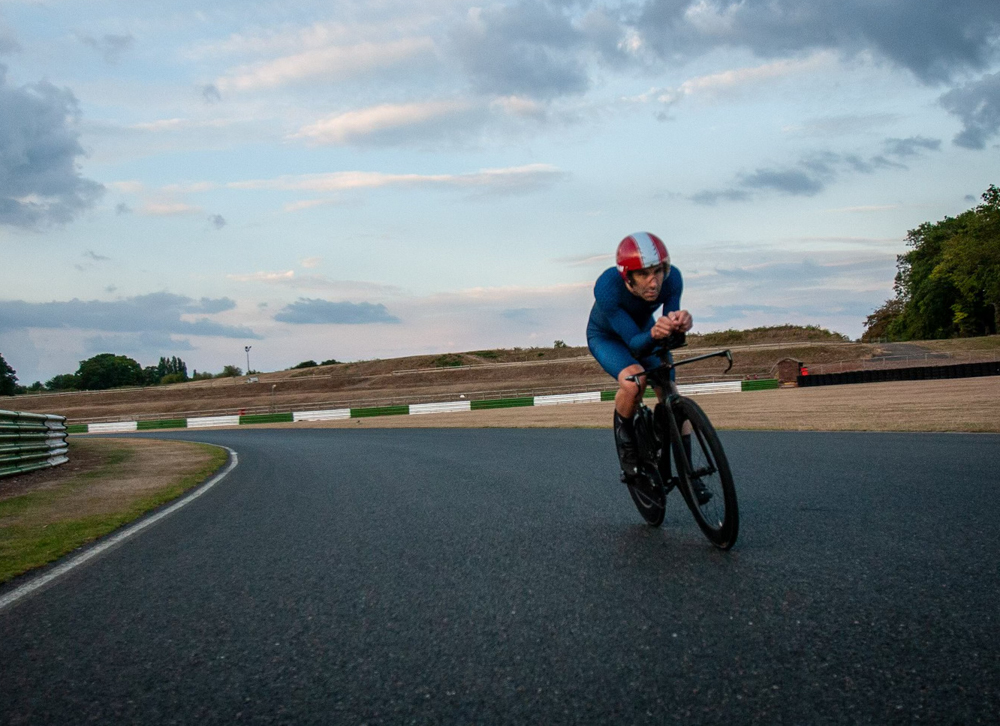Aerodynamics is important for you as a cyclist because regardless of how fast you are on the bike, understanding how to be more “aero” will save you minutes on your triathlon.
You’ve probably heard a number of things about aerodynamics over the years, plus some of those aero myths, but I’d like you to read this email with an open mind. Let’s set the record straight and understand why aerodynamics is one of the best ways to make you a faster cyclist.
Aerodynamics and Mechanical Efficiency
Remember from last month, your goal is to be a faster cyclist, outsmart your competitors, and improve your mechanical efficiency. Aerodynamics burns watts in both heat and sound making it one of the largest watt wasters. Improve your aerodynamics by using more of the watts you put into the pedals to move you forward, ultimately, making you faster.

Aerodynamics 101
Have you ever stuck your hand outside the window of a moving car? (If not, try it out, you don’t know what you’re missing) That’s the simplest visual for aerodynamics. When your palm is down, your hand moves through the air easily – low drag. When you turn your palm forward, your arm quickly gets pushed to the back- high drag. The key to aerodynamics is to reduce your drag in all ways possible. In cycling, your body is the largest form of drag. Reducing drag saves watts and makes you faster.
The Largest Aerodynamic Drag Producers for Triathletes:
The top three items to optimize to reduce your aerodynamic drag:
- Bike fit
- Wheels
- Helmet
Aerodynamic Myths
Speed: Some believe you need to be traveling a certain speed to get aero benefits. We’ve heard anywhere from 15-20 mph. Truth is, it doesn’t matter. Aerodynamics matter at all speeds. Aero savings are more at higher speeds but they still matter at lower speeds.
Weight: Some believe that weight is as important or more important than aerodynamics. Maybe because it’s something you can see and measure, but the “lighter is faster” old wive’s tale has persisted. Truth is, weight differences have little to do with time. If you want to get technical, weight matters most getting up to speed when trying to overcome inertia. However, even when we studied heavy aero wheels and super light box rim wheels on the triathlon with the most vertical change, Savageman, aero wheels won. Once you get up to speed, you don’t start and stop, so there is little to no benefit to a lighter wheel.
Wheel Depth: We hear a couple things regarding wheel depth: One is that some believe that only experienced cyclists can handle deep wheels. Truth is, good wheel design will allow you to enjoy a deeper aerodynamic wheel. Back in the day, wheels were designed to be aerodynamic but not stable. Crosswinds were scary! Today, we focus on aerodynamics and stability in the design process. We will throw away the fastest aero wheel if stability sucks.
Contrarily, some believe that no matter what, the fastest (which are often the deepest) wheels are are the best choice. It’s already been stated but truth is, the fastest wheels for you are often not the deepest. You want a wheel that allows you to stay in the TT position.
Wheels and Aerodynamics
Great wheels can save you minutes at your next triathlon. All FLO wheels are designed to greatly reduce your drag aka be super aero. Back in the day, we developed a computer that mounted on a bike that collected real world aerodynamic data. We learned that cyclists have a limited range of yaw angles in which the aerodynamics matter most. We then used that data to create a custom algorithm and developed rim shapes that are that are fast where it matters, on the road.
For triathletes, we suggest a staggered approach to wheels- deeper in the back. Choose a front wheel that you can handle in all wind conditions, because remember, our goal is to reduce drag. If you come out of the bars, it will negate the benefit you received from a deeper wheel and then some. 9 times out of 10, triathletes choose as 64 AS/77 AS wheel set.
Wheel 1:1
We’ve only scratched the surface of aerodynamics but these basics will give you more knowledge than 95% of your competitors. If you’d like to discuss aerodynamics in detail and learn how to optimize your wheels for your next triathlon feel free to book a Wheel 1 on 1.

Co-founder at FLO Cycling. Jon manages the day to day operations and acts as the lead engineer for all FLO products.
